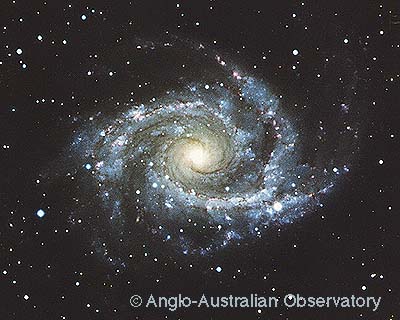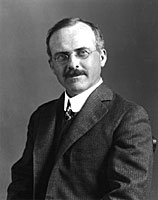The controversy culminated in the Great Debate in 1920 at the National Academy of Science in Washington, DC.

| During the early part of the
twentieth century, there was great debate as to the
nature of the spiral nebulae.
Some astronomers believed they were nearby objects,
within our own Galaxy. Others believed they were
galaxies in their own right, very large and very
distant.
The controversy culminated in the Great Debate in 1920 at the National Academy of Science in Washington, DC. |
 |
 Shapley |
Harlow Shapley: Spiral nebulae are nearby members of our Galaxy.
|
 Curtis |
Heber Curtis: Spiral
nebulae are distant galaxies.
Also, if they were nearby and moving that fast, the nebulae themselves should have large proper motions. We don't see that. |
We now know, of course, that the nebulae are distant galaxies. So what was wrong with Shapley's arguments?
Suddenly, our whole view of the Universe expands, and our view of our place in it shrinks...
Edwin Hubble detects Cepheid variables in the Andromeda nebula using the new 100" telescope on Mt Wilson. By measuring the period of the Cepheids, he calculated their absolute magnitude. From their observed apparent magnitude, he could then solve for the distance: d=285 kpc, well outside the Milky Way!
(As it turns out, Hubble actually got it wrong. He was observing classical Cepheid variables, but had calibrated their absolute magnitude using Type II Cepheids, which are systematically less luminous than classical Cepheids. The actual distance to Andromeda is more like 750 kpc...)